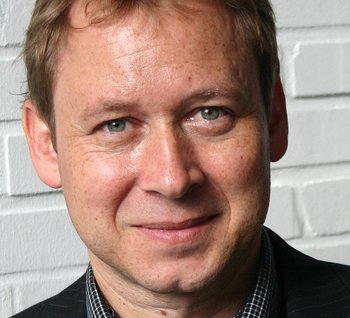Structure and Nano-/Micromechanics of Materials
Yasmin A. Salem (S): What is the mission of the new department?
Prof. Dr. Gerhard Dehm (D): We have several aims. First of all we want to develop experimental methods to perform quantitative nano-/micromechanical and tribological tests for complex and miniaturized materials. Additionally, we aim at understanding the underlying deformation mechanisms and by that establish material laws for the local and global mechanical behaviour. The development of these laws will allow us to generate new nanostructured materials and high temperature intermetallics with superior mechanical properties.
S: So the focus will be on nano sized materials. Why this?
D: Materials show a totally different behaviour at the micro and nano scale compared to their bulk counterparts. The analysed dimensions are that small that defects in the materials correspond directly with the size of the sample. This results in exceptional material properties which then can be transferred to bulk materials.
S: Which materials will you analyse?
D: For small scale materials I am especially interested in thin film systems such as metastable metallic films or brittle films on flexible substrates. For bulk materials, high temperature materials and complex steels will play a central role. Also the assembly of ceramics and polymers with different kinds of metals will be of research interest.
S: And what about the characterisation methods?
D: A cornerstone of my work is the combination of advanced characterisation and mechanical testing in form of in situ nano-/micromechanical experiments which permit to simultaneously observe the microstructural changes while measuring the mechanical response. Therefore, atomic resolved highresolution transmission electron microscopy (TEM), analytical and conventional TEM, scanning TEM and scanning electron microscopy with electron backscattered diffraction (SEM/EBSD), focussed ion beam microscopy (FIB), X-ray diffraction and synchrotron radiation techniques will be used. The synthesis of miniaturized nanostructured materials will be done by physical vapour deposition techniques.
S: How is the department structured?
D: The department is structured in interlinked groups each led by one group head. The groups are:
- Nano-/micromechanics of materials
- Advanced microstructure characterisation
- Nanotribology
- Synthesis of nanostructured materials
- lntermetallic materials
Moreover, my department will closely collaborate with the other MPIE departments especially in terms of modelling the phenomena an the nano scale by crystal plasticity and OFT methods, characterisation by means of atom probe tomography and in terms of developing new coatings for applied materials.
S: Are there already external collaborations?
D: We have weil established links with research institutes and universities especially in the field of advanced TEM, synchrotron radiation and micro-/nanomechanical testing. However we also collaborate with industry an basic research topics. Just in April we started a research project an small scale mechanics within an EU project driven by industry developing reliable materials for the next generation of power semiconductor devices.
S: What are the main challenges in your research?
D: There are several challenges. Firstly, we have to develop mechanical testing techniques which permit to obtain quantitative data of materials with micron and submicron dimensions. While some commercial solutions exist, new developments have to be made to permit tests at variable temperatures or in different chemical environments. As the tested material volume is small, interpretation of the mechanical data needs new testing protocols and complementary simulations to extract meaningful data. Ta link the mechanical results to mechanisms we have to implement the testing techniques as in situ methods into the SEM, TEM, and X-ray/synchrotron facilities. What we want to learn are how material dimensions, internal interfaces and surfaces control the material properties from the atomistic level up to the micron scale with a focus an mechanical issues such as dislocation plasticity, fatigue, and fracture. Small scale mechanics will also help to explore the mechanical limits and reliability of materials independent whether they are used as structural or functional components.
S: Where do you see the main application possibilities?
D: The department's research is especially interesting for applications in the nano- and microelectronics e.g. for automotive electronics, in power engineering and for flexible electronics. Other application possibilities are found in the field of corrosion protection and the processing of surfaces as the assembly of ceramics and polymers with metals will be a research question.
Author: Yasmin Ahmed Salem
